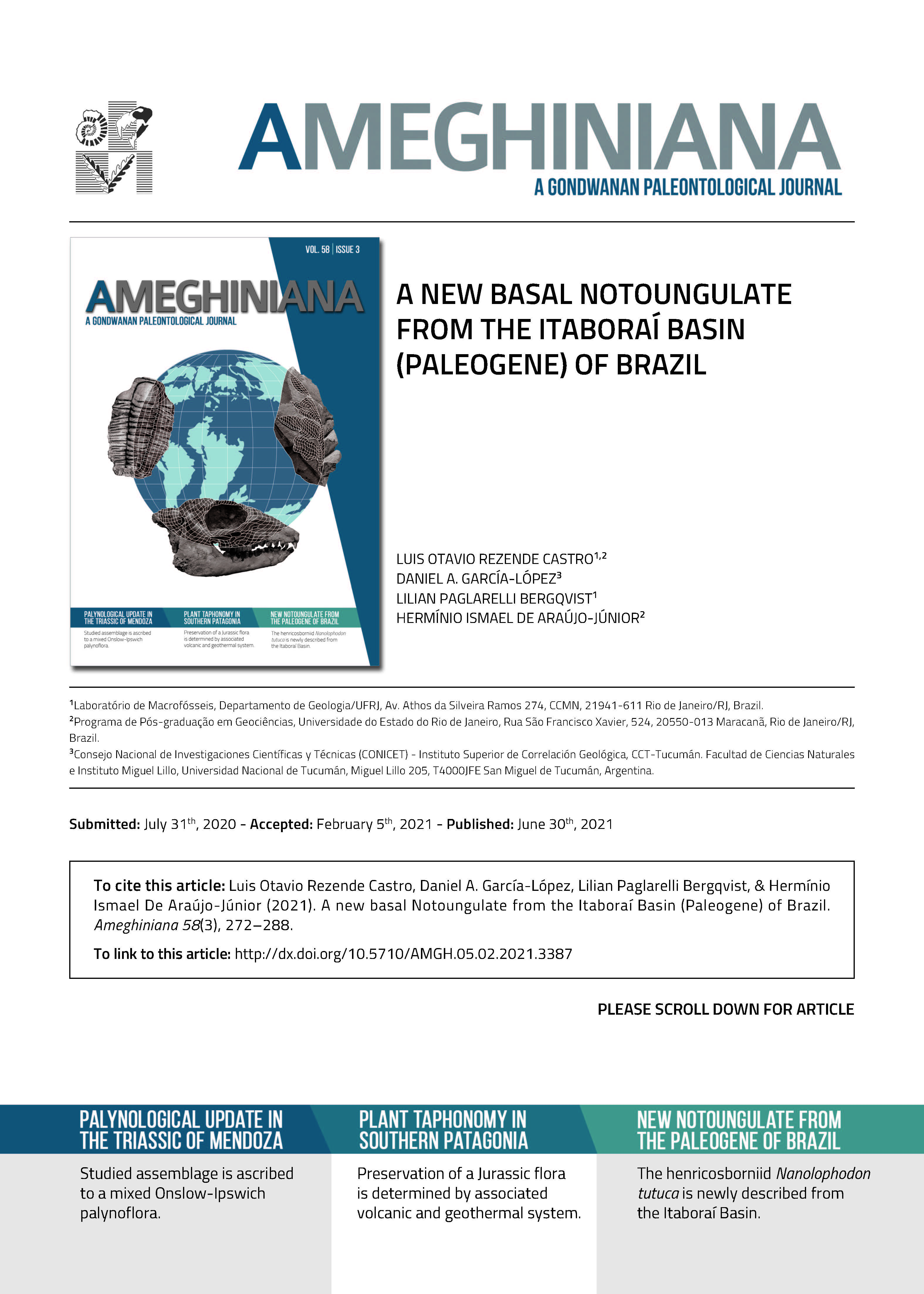A NEW BASAL NOTOUNGULATE FROM THE ITABORAÍ BASIN (PALEOGENE) OF BRAZIL
DOI:
https://doi.org/10.5710/AMGH.05.02.2021.3387Keywords:
Notoungulata, Henricosboniidae, Itaborai basin, “1968 Fissure”.Abstract
A new basal notoungulate, Nanolophodon tutuca gen. et sp. nov., is described. This is represented by maxillary and dental fragments and by isolated teeth. The holotype and referred material were found at the “1968 Fissure” of the Itabora Basin, Rio de Janeiro State, Brazil. This basin has been regarded as early Eocene in recent contributions. The generalized appearance and brachydonty of the studied specimens, together with the presence of certain typical traits (poorly developed entolophid, well-developed metacone column, etc.) indicate that N. tutuca can be considered among the group of genera traditionally known as henricosborniids, easily distinguishable from Typotheria by the absence of crista 1 and from Toxodontia by the absence of crista intermedia. It is also different from all other henricosborniids by a combination of characters, such as the presence of a long crochet, the development of two small cristae in the ectoloph, and the large paraconid, among others. In the context of a phylogenetic analysis performed, we do not find conclusive evidence about the synonymy between Itaboraitherium atavum and Othnielmarshia pristina. In turn, we question the reference of these forms as henricosborniids, based on the complex occlusal dental pattern observed in both cases. Finally, based on the observations made in the present study, we discuss the identification of the paraconid in notoungulates, which may be associated with some cusps located mesially to the metaconid and identified as pseudoparaconids in past studies.

Additional Files
Published
Issue
Section
License
Authors publishing in Ameghiniana have the option of making their article freely available online. Authors opting for the Open Access must pay a fee of $300 (US dollars) to cover article-processing costs and to ensure the article is made open access. Please contact the Production Team after the acceptance of your manuscript if you are interested in making your article Open Access. This option implies by default a license Creative Commons Attribution Non-Commercial-NoDerivs License (CC BY NC ND). If your funding institution requires a different licensing option please communicate this to the Production Team after the acceptance of your manusctipt.










